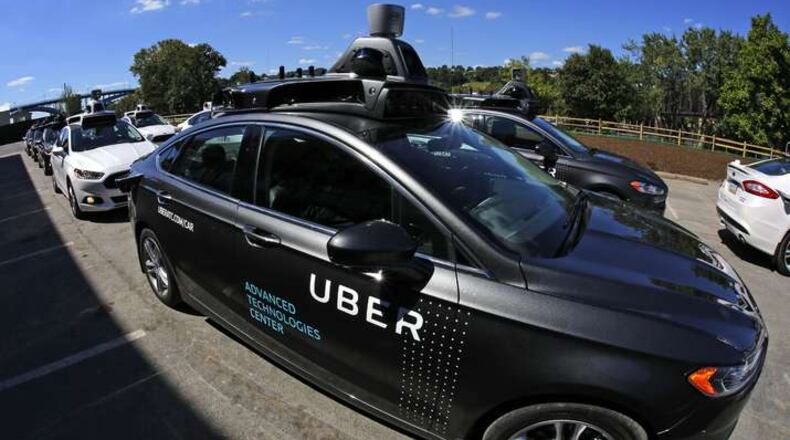The future arrived Wednesday. In Pittsburgh, of all places.
Wednesday marked the debut of self-driving cars working on behalf of Uber , the fast-growing ride-hailing service. Only four such vehicles were cruising the streets of the Rust Belt city, and each had two people in the front seats ready to take control if something went wrong, but their presence was a watershed moment. Between them, autonomous vehicles and the so-called sharing economy have the potential to reshape our lives as sharply as the Internet did.
There’s a personal component to this. Autonomous vehicles are expected to drastically reduce accidents, injuries and fatalities — particularly as more and more drivers are distracted by their mobile phones. (If you want to complain about losing some notional liberty to drive yourself, you better not be one of the many people I see stopped at green lights, running red lights or driving around with your eyes pointed at a screen instead of the road.)
We may also be less inclined to own cars — with all the expense they entail — if self-driving vehicles for hire are always available. Autonomous vehicles are projected to saturate the market by 2035, but if anything they're likely to beat that deadline. As they do, and are put to use by operators like Uber and Lyft, owning and maintaining a personal car will make less sense.
But the broader policy implications are just as sweeping, if not more so.
All the talk about traffic congestion in Atlanta? That could virtually disappear if the promise of autonomous cars — driving more quickly and safely, talking to each other to avoid accidents (and the resulting traffic stoppages) — are realized.
What’s more, even a long commute may be more tolerable if our minds, hands and eyes are freed up. For many people, that commute time would simply become the beginning and ending of their work days, allowing them to spend less time at the office. For others, it could be a time for relaxation instead of stress.
The cost-benefit analysis of mass transit should also change dramatically in the era of micro transit. There may still be some corridors in metro Atlanta that warrant high-capacity transit, but most routes will be best served by private, self-driving fleets. Instead of subsidizing all transit riders regardless of income, tax dollars can be targeted to the truly needy.
And a network of streetcars? If we are foolish enough to rebuild what 20th-century Atlantans decided they no longer needed, 21st-century Atlantans are destined to rip up streetcar tracks once again.
Instead, much public capital can go to other uses. As more commuters ride in vehicles that drop them off and then move on to the next fare, city leaders can tear up any number of parking lots and put up a little bit of paradise in the way of parks.
As with the Internet and other technological breakthroughs, it won’t all be a smooth ride. Lots of people make their living behind a wheel, as was once true on farms and in buggy factories. But history tells us there will also be smart people out there coming up with new services and products we never imagined, provided and built by people now working as truck and taxi drivers, and bought with money freed up from other uses.
We should be preparing for that future, not fearing it. After all, it’s just about here.
About the Author
The Latest
Featured



